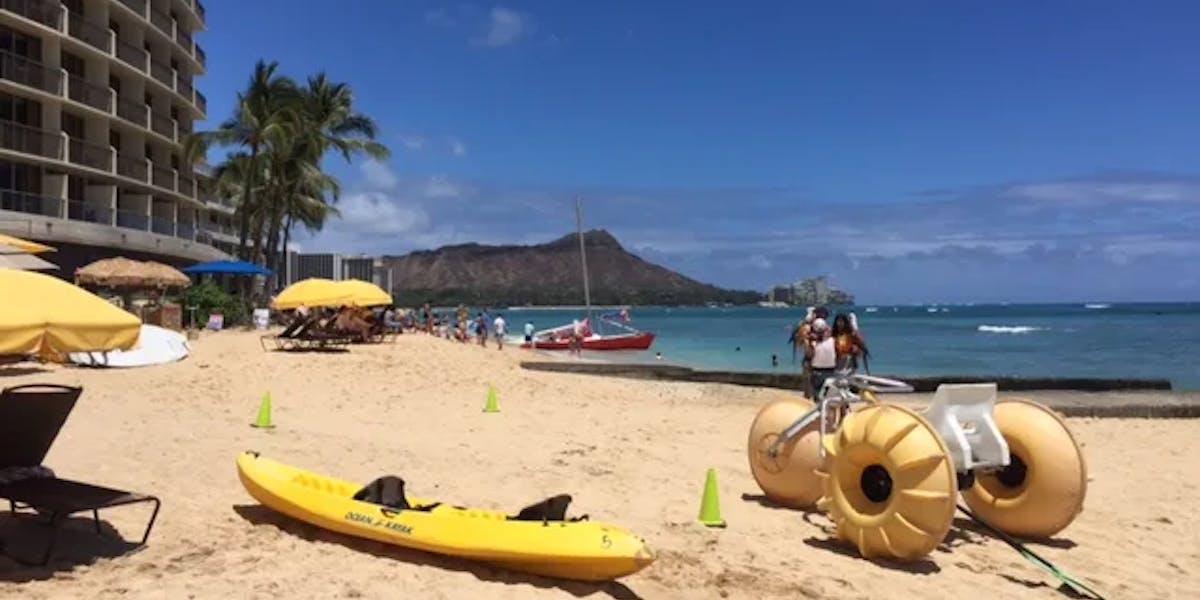Hawaii Weather: Mild Yet Unpredictable

When you think about Hawaii weather, what kind of climate do you imagine? If you’re like most people, you picture Hawaii as a state that enjoys perpetual summer, complete with sunny skies and just enough rain to keep the valleys lush and green.
You’d be right—mostly. But, Hawaii’s climate is much, much more complex. In fact, the Big Island alone boasts 11 out of the 13 world climate zones!
According to the National Weather Service, ” The outstanding features of Hawaii’s climate include mild temperatures throughout the year, moderate humidity, persistence of northeasterly trade winds, significant differences in rainfall within short distances, and infrequent severe storms.”
What does that mean for visitors? Expect just about any kind of weather and pack appropriately!
As a general rule, you will experienced drier, sunnier conditions on the “leeward” sides of each island (the side sheltered from the northeasterly trade winds) and cloudier weather with more rain on the “windward” sides of each island (the side facing the northeasterly trade winds). On Oahu, Kaneohe and Kailua are considered towns on the “windward” side of the island. Honolulu and Hawaii Kai are on the “leeward” side of the island.
Another factor to consider is time of year in Hawaii. Although Hawaii temperatures don’t fluctuate as much as most locations on the mainland, you will find moderate temperature differences depending on what time of year you visit.
According to the National Weather Service, for most of Hawaii, there are only two seasons: “summer,” between May and October, and “winter,” between October and April. Hawaii’s warmest months aren’t June and July. Instead, they are August and September. In winter, the state’s coolest days aren’t December and January, but February and March.
In August and September, Hawaii weather is at its warmest. The average high temperature in Honolulu in August is 89 degrees with a low of 75 degrees. In February and March, the average high temperature is 80 degrees with a low of 66 degrees.
Compare that to Hilo on the Big Island (one of the cooler cities in the state). There, the high in August is 83 degrees and a low of 70 degrees. In February, the high temperature averages 79 degrees with a low of 64 degrees.
And, remember, consistent rainfall can lower overall temperatures, as well—not to mention that rain can put a real damper on your vacation plans.

According to the National Weather Service, “Over the ocean near Hawaii, rainfall averages between 25 and 30 inches a year. The islands receive as much as 15 times that amount in some places and less than one third of it in others.”
In general, the state’s heaviest rainfall comes between October and April and varies depending on island and location on that island.
In Honolulu, the average rainfall is 17.13 inches per year, and the city experiences 154 days of rain per year. In Hilo, 126.9 inches of rain fall, on average, every year. The driest Mt. Waialeale on Kauai (one of the wettest spots on Earth) averages a whopping 422 inches of rain per year!
In general, locations near the coast on the leeward sides of each island receive the least amount of rain, but that also means many of these places are the least “lush” and green.
As for snow, Hawaii has that, too! On Mauna Kea on the Big Island, snow is common in the wintertime. You can even ski down its slopes!
Hawaii weather is predictable and unpredictable at the same time. Temperature fluctuations are mild, yet rainfall can be brief, consistent, or sporadic, depending on where you’re staying.
So, pack for all conditions, just in case!